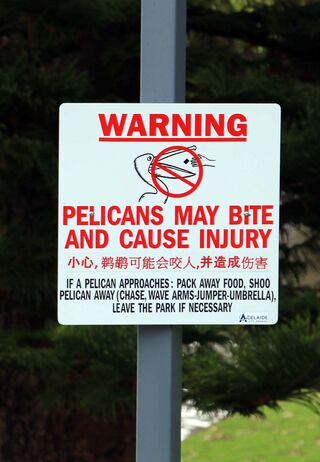Smoking
International Day for Disaster Risk Reduction
Let’s celebrate people!
Posted October 12, 2020
October 13th is the International Day for Disaster Risk Reduction with the theme of “disaster risk governance." What does it all mean? And how do we sort out this jargon from other phrases including integrated risk governance, earth systems governance, and operational risk governance?

“Governance” means the rules, regulations, norms, and codes we live by, both the systems and the methods. It can refer to government at any level while being about unwritten rules, cultures, codes of conduct, and expected behaviors.
“Risk governance," then, means dealing with risk. But everything has risks. Stepping outside could mean breathing in air pollution or being hit by a vehicle. Staying indoors might lead to a lack of exercise, boredom, or exposure to off-gassing paint.
This is the point. All risk cannot be avoided and perhaps should not be avoided, since some people enjoy the thrill of or gains from different types of risks, from skydiving to smoking. Instead, we govern risk to try to develop a balance between people selecting their own risks without impinging on other people’s choices about risks.
Smoking is allowed in one’s home, but many places around the world ban it in restaurants. Traffic lights, stop signs, yield signs, and roundabouts formulate rules to make transportation safe for everyone. Political battles brew and explode over which rights should dominate for a wide variety of risks.
This day, though, is not just about the mundane, common risks of day-to-day life. Instead, it is about disaster risk governance! How is disaster risk different from risk?
A disaster typically refers to a situation requiring outside help for coping. This rather generic description is deliberate, accepting that disasters arise from many, varied circumstances.
A family losing a loved one or their house is a local disaster. The COVID-19 pandemic is a global disaster. In between these scales, a flood might sweep away a main road and an earthquake might raze a city.
The disaster is not the virus, the flood, or the earthquake, but rather the fact that we are unable to deal with these phenomena. We failed in our governance systems designed to prevent a pandemic, to avoid reliance on a single route, and to implement the knowledge we have to stop infrastructure from collapsing during a tremor.
Because the disaster arises from society’s poor choices on risk governance, not from the environmental phenomena, we prefer to avoid the term “natural disaster." Disasters are not natural, being caused instead by us creating and continuing disaster risk when we actually have choices to reduce disaster risks. This is where the phrase "disaster risk reduction" comes from and why we have the International Day for Disaster Risk Reduction.
Which all leads to the theme of disaster risk governance. It seems odd that it takes over 400 words to describe the straightforward concept of doing better to stop disasters when five will do: Prevention is better than cure. This is indeed one of the difficulties of the risk governance systems we create, steeped in jargon and generating complicated phrases.
Glossaries list gems such as “extensive disaster risk” in comparison to “intensive disaster risk” alongside “residual risk." Policymakers debate the differences between “disaster risk reduction” and “disaster risk management." People get confused trying to differentiate “vulnerability” and “exposure” rather than simply combining them. We could easily say “warning” rather than “early warning system” entailing hand-waving explanations of how early and how systematic.
In other words, and in fewer words, we need to learn how to govern our disaster risk vocabulary in order to govern our disaster risk.
Ultimately, we do not want disasters (hopefully). We want to save lives, provide fulfilling livelihoods, and keep society functioning, no matter what nature does. We even use natural processes for all this. Freshwater floods and volcanic ash bring fertile soil, so at what point did they become hazardous to us?
The crux of disaster risk governance begins to appear. If we do not want disasters, which is presumably a common baseline for us all, how must we act to implement the five words of “prevention is better than cure?" How do we think ahead of disasters to stop them from happening?
It means considering everything in our daily and decadal lives. Tangible necessities are covered such as food, nutrition, water, energy, health, education, shelter, settlement, and home. Intangible principles emerge, notably equity, equality, justice, safety, inclusivity, and the slew of these and other buzzwords which are complicated to define and to explain (not to mention “good governance”). Neither list can be exhaustive.
Ultimately, it is about people which means, as above, lives, livelihoods, and society. Disaster risk governance is governing for and by people, so that everyone is involved, is served, and contributes. In marking the International Day for Disaster Risk Reduction, let’s make disaster risk governance a people day: a day about, with, and for everyone.
References
Kelman, I. 2018. "Lost for Words amongst Disaster Risk Science Vocabulary?" International Journal of Disaster Risk Science, vol. 9, no. 3, pp 281-291.
Kelman, I. 2019. "Axioms and Actions for Preventing Disasters". Progress in Disaster Science, vol. 2, article 100008.
Kelman, I., JC Gaillard, J. Lewis, and J. Mercer. 2016. "Learning from the history of disaster vulnerability and resilience research and practice for climate change". Natural Hazards, vol. 82, no. S1, pp. S129-S143.
Kelman, I. J. Mercer, and JC Gaillard (eds.). 2017. Routledge Handbook of Disaster Risk Reduction Including Climate Change Adaptation. Routledge, Abingdon, U.K.




